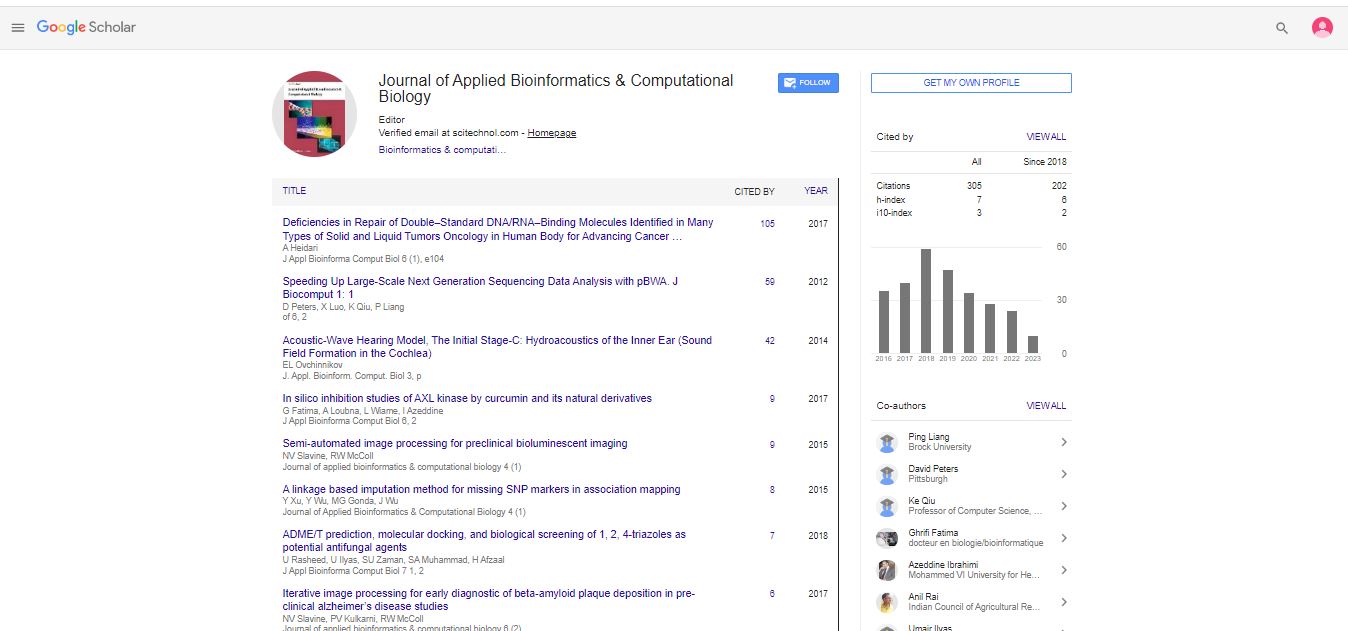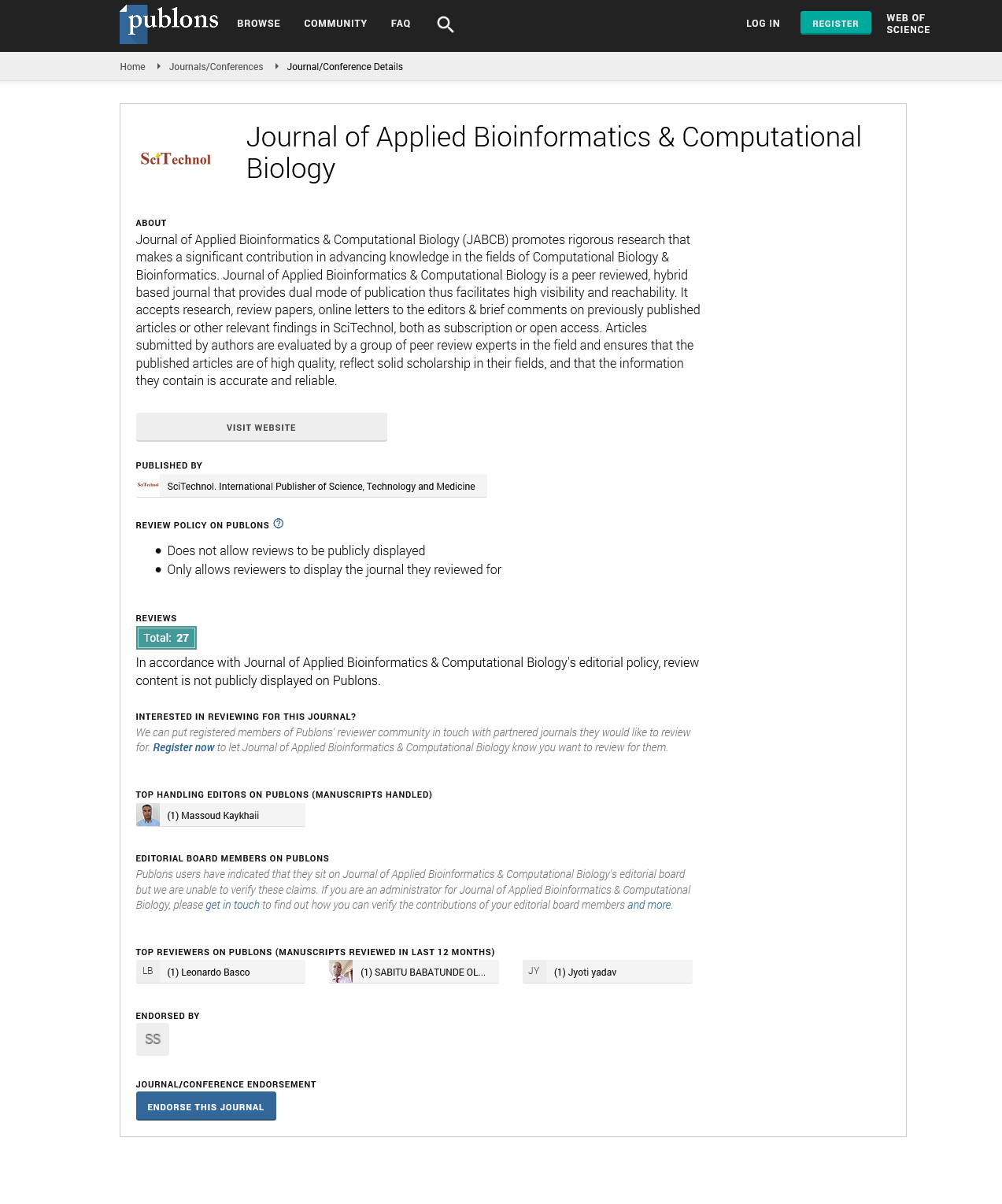Glycopeptides by quantum chemistry and artificial intelligence
Mehmet Gokhan Habiboglu
Turkish-German University, Turkey
: J Appl Bioinforma Comput Biol
Abstract
Glycation destroys or impairs the biological function of peptides and proteins. The bacteria cell wall polymers consist of GlcNAc, which is cross-linked with oligopeptides. While glutamine is a nonessential amino acid that can be derived from glucose, some cancer cells primarily depend on glutamine for their growth, proliferation, and survival. Numerous types of cancer also depend on asparagine for cell proliferation. Thus, glucose and asparagine interactions are at the center of cancer. Moreover, Semliki Forest virus grown in mosquito cells consist of asparagine-linked oligosaccharides. Dengue virus envelope protein (E) consists of two N-linked glyscosylation sites asparagine-67 and asparagine-153. N-linked oligosaccharide side chains on flavivirus E proteins have been associated with viral morphogenesis, infectivity, and tropism. Virologically, ZIKV consists of a single-stranded, positive-sense RNA while the genome encodes three structural proteins including an E protein. Both cryo-electron microscopy and crystallization measurements supported the role of asparagine as a glycosylation site for host cell attachment. Recent studies have shown that ZIKV attacks parts of the adult brain that are central to learning and memory. Furthermore, an observable change in the brain is impaired glucose metabolism within Alzheimer´s disease progression, assessed using positron emission tomography to monitor {18F}-2-deoxy-2-fluoro-glucose uptake within the brain of Alzheimer´s disease patients. The exact molecular mechanism between O-GlcNAc and Aβ remains elusive at the atomic level. Here, we present the structures and energetics of Glc-Asn and GlcNAc-Asn complexes in an aqueous solution medium at the electronic level using quantum chemical calculations linked with artificial intelligence studies. To the best of our knowledge, this study represents the first investigations of aqueous glycopeptides usng quantum chemistry associated with artificial intelligence.
Biography
M. Gokhan Habiboglu has his expertise in mathematical and computational modelling of biological systems. He had interest in modelling especially the population dynamics of cell cultures and emergent structures of aromatic amino acids. Recently, he shifted his focus on deep neural networks and combined his knowledge in this area with the quantum chemistry calculations to estimate some quantum properties of carbohydrates.
E-mail: habiboglu@tau.edu.tr
 Spanish
Spanish  Chinese
Chinese  Russian
Russian  German
German  French
French  Japanese
Japanese  Portuguese
Portuguese  Hindi
Hindi 
